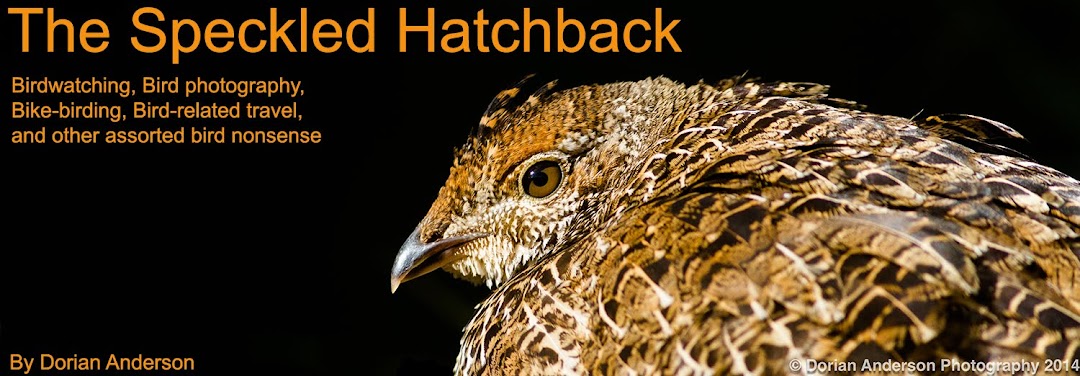ABA #700 - White-throated Thrush
Estero Llano Grande State Park, Weslaco, Texas
Let me first say that I realize I have shorted readers on Colombia coverage. This is by design as I have promised to give the Audubon Society first crack at my content. We'd hoped to be able to release that content after the proposed peace deal was signed this fall, but the failure of the measure to pass a public referendum has delayed our plan. We want the content to make a nice 'splash' once the peace process is officially done. That being said, a revised peace deal looks like it is right now being brokered, so I hope to be able to share more Colombia content in the near future. I will say that as important and as historic as the peace process has been, there really isn't any reason to delay travel to Colombia. The country and its people are fantastic, and, with a bird list approaching 1900 species, it should be at the top of every birder's attention.
Tayrona National Park on Colombia's Caribbean Slope
Closer to home, I went to Texas twice, once in February for the Laredo Birding Festival and again in November for the Rio Grande Birding Festival. Between those events, I made an appearance at the SW Wings Birding Festival in August. At each of these I met many wonderful folks and managed to see some cool birds. The same can be said for the cruise ship pelagic I took in May. Those excursions, coupled with a few new birds I added in California and few 'armchair ticks', pushed my non-Hawaii ABA list from 698 to 713.
699 - Crimson-collared Grosbeak (4) (TX, Feb)
700 - White-throated Thrush (4) (TX, Feb)
701 - Blue Bunting (4) (TX, Feb)
702 - Scripps's Murrelet (CA, Feb)
703 - Marsh Sandpiper (5) (CA, May)
704 - Cook's Petrel (3) (CA, May)
705 - Murphy's Petrel (3) (CA, May)
706 - Hawaiian Petrel (3) (CA, May)
707 - Eurasian Skylark (3) (Victoria, BC, May)
708 - Woodhouse's Scrub-jay (Split, July)
709 - Red-legged Honeycreeper (5) (First accepted ABA record from Texas 2014)
710 - Plain-capped Starthroat (4) (AZ, Aug)
711 - Craveri's Murrelet (3) (CA, Aug)
712 - Dusky Warbler (4) (CA, Oct) - Found by Roget Schoedl and me in Orange County!
713 - Amazon Kingfisher (5) (TX, Nov)
Closer to home, 2016 was a continuation of the SoCal holding pattern that began in 2015 when we moved to LA to be closer to Sonia's family. I greatly - and only very begrudgingly - prioritized birding over photography this year. While I actually prefer shooting, the results around here have been too inconsistent to justify passing on what is usually good birding. If I drive a few hours to escape the coastal hoards I can find the personal space in which to shoot, but weekday work and weekend family commitments usually prevent that. There is decent birding much closer, so that's where my time has been spent. Most of my local birding was done in Orange County, but I've more recently done some birding in my home LA County to at least get a flavor for it before we move. I did also find a tiny local park near our apartment that I try to visit once a week or so. Building up my park list has been a fun diversion on those days when other commitments or traffic prevent getting further afield.
My local patch, like a boss.....
Overall, my photographic output plummeted this year; It was my least productive in the last seven. My standards for a keeper have certainly increased over the years, but most of the decline was due to lack of subjects here in 'the sprawl'. I did manage to squeeze out a few good frames, and I'll give you these as my 2016 Top Ten.
Please click images for nice, high resolution views!!!
Cactus Wren - Campylorhynchus brunneicapillus
San Diego County, CA
Canon 500mm f/4 IS + 1.4x III on EOS 7D2
1/3200 at f/8, ISO 800
Mallard X Northern Pintail hybrid
Orange County, CA
Canon 500mm f/4 IS on EOS 7D2
1/3200 at f/5.6, ISO 640
Elegant Tern - Thalasseus elegans
Orange County, CA
Canon 400mm DO IS II on EOS 7D2
1/5000 at f/5.6, ISO 400
Black-chinned Sparrow - Spizella atrogularis
Orange County, CA
Canon 500mm f/4 IS on EOS 7D2
1/2500 at f/8, ISO 800
Black-vented Shearwater - Puffinus opisthomelas
Orange County, CA
Canon 500mm f/4 IS on EOS 7D2
1/4000 at f/4, ISO 800
Western Sandpiper - Calidris mauri
Orange County, CA
Canon 500mm f/4 IS on EOS 7D2
1/4000 at f/5.6, ISO 400
Gambel's Quail - Callipepla gambelii
Amado, AZ
Canon 400mm f/4 IS DO on EOS 7D2
1/4000 at f/5.6, ISO 640

So, that's basically what went down this year. I want thank everyone for hanging in with this blog. The more time I spend birding, the more I believe that birding is as much about the community as it is anything else. This blog is one small little way that I can stay connected to that community, so its nice to see at least a few of you enjoy reading what is effectively my personal birding journal. There's lots more comming next year, so please stay tuned! Best of luck with your own 2017!
Orange County, CA
Canon 500mm f/4 IS on EOS 7D2
1/2500 at f/8, ISO 800
Black-vented Shearwater - Puffinus opisthomelas
Orange County, CA
Canon 500mm f/4 IS on EOS 7D2
1/4000 at f/4, ISO 800
Western Sandpiper - Calidris mauri
Orange County, CA
Canon 500mm f/4 IS on EOS 7D2
1/4000 at f/5.6, ISO 400
Gambel's Quail - Callipepla gambelii
Amado, AZ
Canon 400mm f/4 IS DO on EOS 7D2
1/4000 at f/5.6, ISO 640
Hooded Oriole - Icterus cucullatus
Amado, AZ
Canon 400mm f/4 IS DO II on EOS 7D2
1/4000 at f/5.6, ISO 800
Multicolored Tanager - Chlorochrysa nitidissima
Cali, Colombia
Canon 500mm f/4 IS + 1.4x III on EOS 7D2
1/125 at f/7.1 ISO 1600
Chestnut-crowned Antpitta - Grallaria ruficapilla
Rio Blanco, Colombia
Canon 100-400mm f/5.6 IS II on EOS 7D2
1/200 at f/5.6, ISO 1600
So, that's basically what went down this year. I want thank everyone for hanging in with this blog. The more time I spend birding, the more I believe that birding is as much about the community as it is anything else. This blog is one small little way that I can stay connected to that community, so its nice to see at least a few of you enjoy reading what is effectively my personal birding journal. There's lots more comming next year, so please stay tuned! Best of luck with your own 2017!




















































